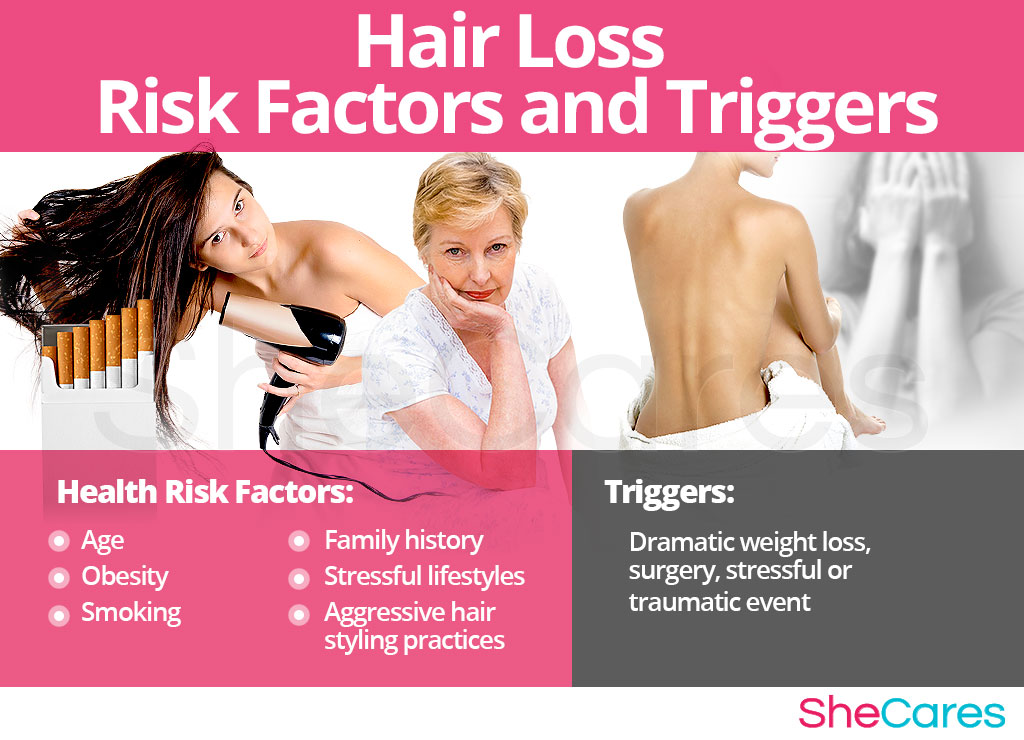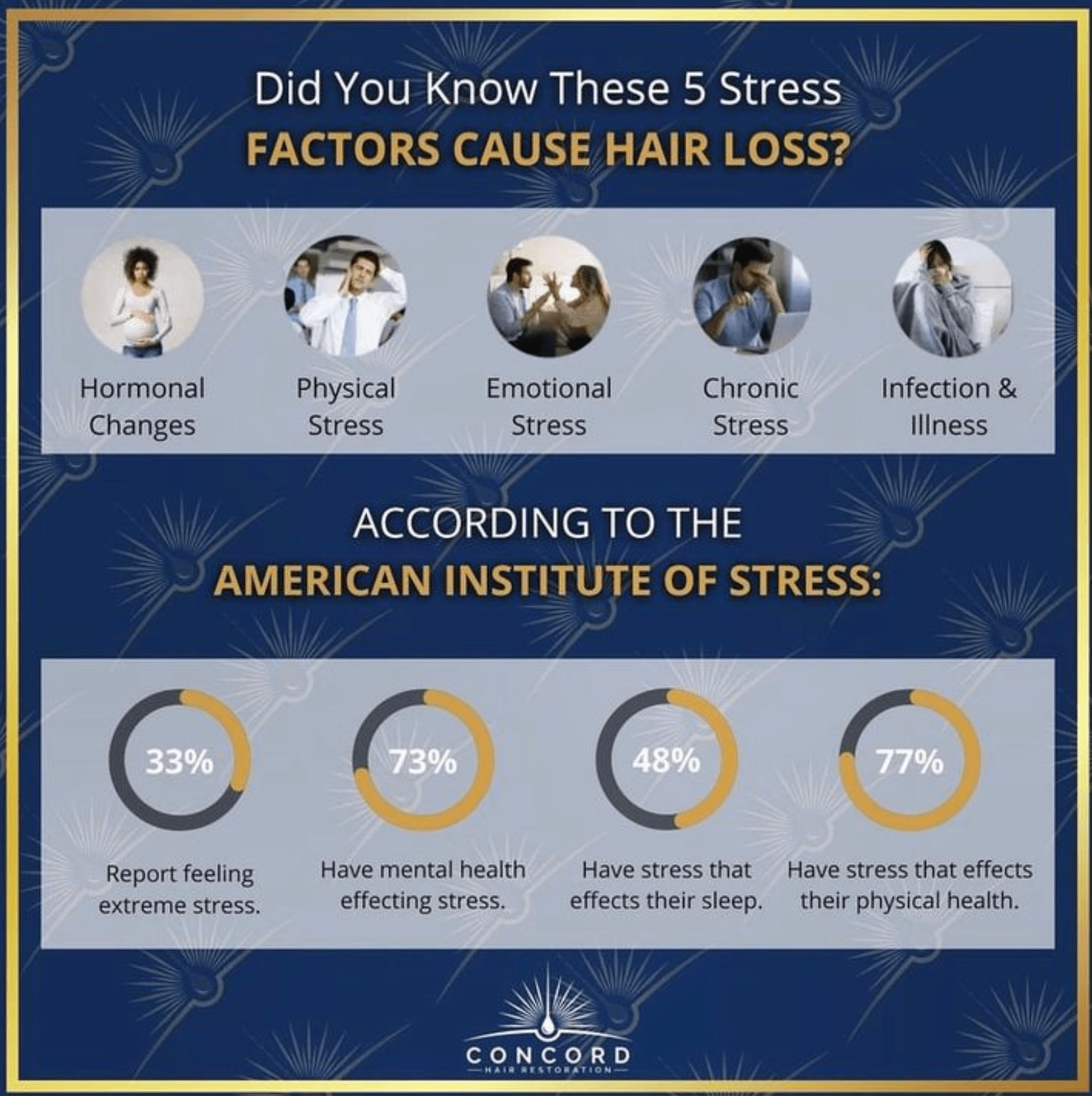Table Of Content
- Acid Reflux Drugs May Heighten the Risk of Migraine Attacks and Severe Headaches
- Healthy Eating
- Life With Alopecia: Your Guide to Microblading, Eyelash Extensions, and More
- Get the best in health and wellness
- Effective hair loss treatments for women
- Real-Life Dating Tips for People Living With Alopecia
- How Does Hair Grow?

Data relating zinc levels to telogen effluvium and androgenetic alopecia are not homogeneous. In another study comparing 312 people with hair loss with 32 controls, patients with alopecia areata and telogen effluvium showed low zinc levels [88]. Vitamin D plays a regulatory role in various pathways, such as calcium absorption, bone mineralization, immune system, and DNA transcription [62, 63].
Acid Reflux Drugs May Heighten the Risk of Migraine Attacks and Severe Headaches
The antioxidant potential of other selenoproteins is thought to have a significant impact on human health [75]. Hair loss has been observed in selenium-deficient rats [76] and in knock-out mice lacking a selenium cofactor protein [77]. Although these findings suggest a link between selenium deficiency and hair loss, the role of selenium in human hair follicles is still not fully understood. Among people who have been diagnosed with selenium toxicity, 72 percent was affected by hair loss affected, losing 10 percent to 100 percent of their hair [78]. After starting daily selenium therapy in 6 infants with pseudoalbinism alopecia-like findings, alopecia and pseudoalbinism improved when serum selenium levels reverted to normal [79].
Menopause and hair loss: everything you need to know - Women's Health UK
Menopause and hair loss: everything you need to know.
Posted: Wed, 31 Jan 2024 08:00:00 GMT [source]
Healthy Eating
If you’re dealing with male- or female-pattern hair loss, you have a variety of treatment options at your disposal. Poor nutrition or severely restrictive crash or fad diets can lead to all kinds of nutrient deficiencies, which in turn can result in hair loss, from thinning hair to patches of baldness. “Because not all hair follicles in the resting stage during pregnancy will move into the shedding phase at once, excessive shedding can last 6 to 15 months postpartum,” says Green. She also notes that postpartum related hair loss is most noticeable along the hairline, as well as in women with long hair. Hair loss — whether baldness or noticeably thinning hair — can happen for various reasons.
Life With Alopecia: Your Guide to Microblading, Eyelash Extensions, and More
Zinc deficiency can cause telogen effluvium, thin white and brittle hair, as well as many dermatological problems [83]. Superoxide dismutase is one of the zinc-dependent enzymes, which is thought to be one of the contributing factors to alopecia areata [84]. The function of antioxidant processes in alopecia areata is a popular issue in the scientific community. Zinc has also been linked to the Hedgehog signaling pathway, which has been linked to hair follicle morphogenesis [53]. Although zinc homeostasis impairment has been linked to a number of issues, its diabetic effects and function in metabolic syndrome are still being researched [85]. Zinc is a cofactor for enzymes involved in dopamine transport [86], cell membrane stabilization [87], and prostaglandin metabolism.
The effects of the main components of the foods consumed in the MD are examined in hair loss and in many other diseases. Studies have shown that the polyphenolic compounds in tea significantly increase hair growth. Despite the popularity of biotin, there is still insufficient evidence in randomized controlled trials to support that supplementing this micronutrient prevents or treats hair loss. There are no clinical studies showing that biotin supplements are effective in treating hair loss unless people are deficient [54]. Hair loss, rashes on the skin, and fragile nails are all signs of biotin deficiency. In one study, 38% of women suffering from hair loss had low levels of biotin [55].
A 2017 review found 63 genes that may play a role in male pattern baldness, with only six of them found on the “X” chromosome. Studies looking at twins estimate that genetics account for about 80 percent of male pattern baldness. These factors include other health conditions, environmental factors like stress, and genetic factors. Lichen planopilaris (LPP) is a type of alopecia that causes inflammation and scarring in the hair follicles.
Getting enough protein in your diet is essential as it provides the building blocks for proper hair growth; meat, tofu, eggs, beans, grains, nuts, and fish are all good protein sources. Some studies suggest that telogen effluvium can also be connected to low levels of iron, so include iron-rich foods like leafy vegetables, lentils and liver where you can. If you like the idea of adding supplements to your routine, there are some which are specifically formulated to contain ingredients that increase hair thickness and health.
The classification of non-cicatricial alopecias is summarized in Table II. The most common alopecia in this group is androgenic alopecia. Baldness is often hereditary, and is activated by a shift in your hormones. Although genetic hair loss is permanent, medications, laser therapy, and platelet-rich plasma injections may help stimulate hair growth in balding areas. Some people also get hair transplants to cover areas of hair loss.
Uncovering the complex relationship between balding, testosterone and skin cancers in men - Nature.com
Uncovering the complex relationship between balding, testosterone and skin cancers in men.
Posted: Tue, 03 Oct 2023 07:00:00 GMT [source]
How Does Hair Grow?
Hairstyles like braids or weaves also damage hair follicles and cause hair loss. Chemotherapy, or a type of drug that kills cancer cells, can cause a form of alopecia called anagen effluvium. The chemotherapeutic agent causes the hair to fall out from the root. Different types of stressors cause many forms of hair loss.
According to the Mayo Clinic, trichotillomania most often develops between ages 10 and 13, but it’s considered a chronic problem that may improve with treatment. Thyroid hormones help regulate nearly every function in the body, including hair growth. The right treatment to control either of these thyroid conditions will get hormones under control, stop hair loss, and allow your hair to starting grow back. Hair is made of a protein called keratin that is produced in hair follicles in the outer layer of skin. As follicles produce new hair cells, old cells are being pushed out through the surface of the skin at the rate of about 6 inches a year.

From making comments about cancer to suggesting treatments that worked for friends facing hair loss, here are the top statements experts avoid voicing... Examples of vitamin deficiencies that can cause hair loss include inadequate protein, biotin, zinc, and iron, according to the AAD. Also, if you’re dealing with hair loss from other causes and have a history of hair-pulling disorders, it’s possible to experience trichotillomania as a stress response. Just as hair usually grows back after chemo, it should also grow back once you stop taking any medication that causes hair loss.
The standardized para rubber seed oil has been proven to be a safe and efficient bio-oil to stimulate hair growth or reduce/suppress hair loss [103]. This is the name for hair loss caused by medications that harm your hair follicles. Radiation and chemotherapy treatments for cancer can be toxic to follicles, causing your hair to fall out within the first few weeks after you start treatment. Hair regrowth usually begins within a few months after you finish treatment.
If hair loss is causing you significant distress and affecting your quality of life, seek out support from others. Along with friends and family, talking to a therapist or mental health counselor can help, as can joining support groups. Tinea capitis (scalp ringworm) is hair loss due to a fungal infection. It leads to hair falling out in (often) circular patches, which can grow over time. The exposed skin in these cases is red, flaky, itchy, and can be covered in sores.
Telogen effluvium is usually self-limited and resolves within two to six months. Treatment involves eliminating the underlying cause and providing reassurance. Potentially causative medications should be discontinued, if possible.






















